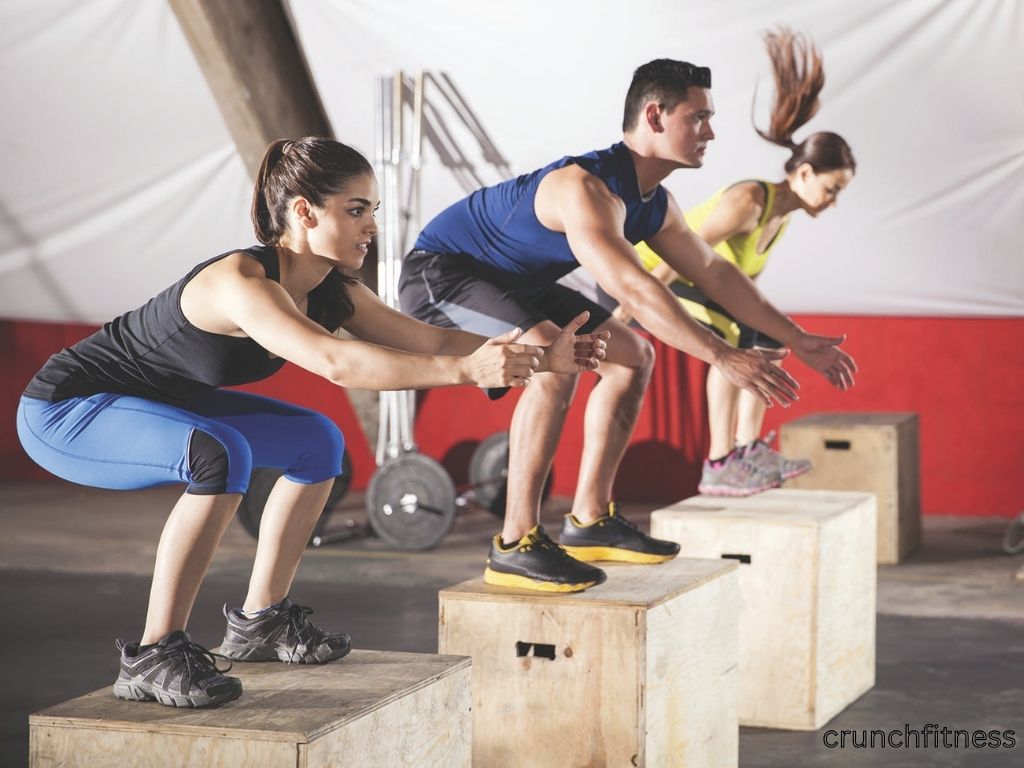Introduction:
Plyometric sports are rapid, dynamic actions designed to enhance energy, agility, and athletic performance. But they are no longer just for athletes in the elite and can get a number of adding plyometrics to their health. Whether you need to transfer better, become more powerful or burn more calories in a short time, can help play.
What Are Plyometrics?

Plyometrics, commonly referred to as “jump training” or “plyos,” are exercises that entail explosive action. The movements are structured to assist muscles in generating the greatest amount of force within a limited time frame.
Plyometric exercises help you move faster, jump higher, and get stronger quickly and powerfully.
Think of:
- Jump squats
- Box jumps
- Clap push-ups
- Burpees
- Skater jumps
History of Plyometrics
In the 1960s and 70s, plyometrics began to gain popularity, especially thanks to Soviet and Eastern European athletes who used these exercises to dominate athletics. Over time, his techniques took the way to the United States and other countries, and now Ploys is a dominant in sports and stamina worldwide.
How Do Plyometrics Work?
- Stretch phase (eccentric): as soon as you prepare for a movement, your muscle is. For example, when squatting down before jumping.
- Arrival phase: a quick break or transition.
- Carding phase: your muscle contract to make explosive movement – like jumping.
Benefits of Plyometric Training
Increased power
Plyos helps you create explosive power. It’s great not only for athletes, but also for anyone who wants to improve how fast and powerful they can move on.
Better athletic performance
Sports such as basketball, football, football and track trust more on sprinting, jumping and rapid change of direction. Plyometrics improves these opportunities directly.
Correction Coordination
Many Plyo exercises require balance, time and rhythm. Over time, they help improve body control and coordination.
Lose weight
Plyometrics is high intensity. They burn a lot of calories and keep your metabolism even after exercise.
Strengthens muscles and joints
Jumping and landing help properly produce electricity in the feet, hips and nucleus, while improving the joint stability – if done properly.
Better flexibility and speed
Quick, reactive movement is the origin of playometrics. Regular exercise can quickly improve your ability to change, decorate and change directions.
Plyometrics for Everyone?
Plyometrics can be extended to early, intermediate and advanced levels of fitness. The key is to start slowly and use the right shape. Each Playo cover should not have an intensive box jump. Even versions with low power-like small hops or modified RUPS effects.
However, people with common problems, previous injuries or some health conditions should be awake and should talk to a doctor or physical doctor before starting Ploys training.
Plyometric Exercises You Can Try
Early plyometric training
Jumping Jacks
Classical! Your body is used for rhythmic, light effect jumping.
Squat to increase the leg
Squat a body weight, and then stand up on the toes. Explosive strength is safely formed.
jump
Great for coordination and heart support.
Line Hops
Jump side aside on a line or rope on the ground. Do foot speed and balance.
Long jump (with control)
Working at a distance and balance, jump on the ground forward and slowly.
Intermediate playometric workout
The box jumps
Jump on a strong box or platform. Focus on a soft landing with knees.
Skater jumps
Jump from one leg to the other and mimic the speed of the quick runner.
Jumping
While jumping from the longe position, you need to replace your feet in middle voltage.
Tuck jumps
Jump up straight and take your knees to your chest. Very intense, but effective.
Pat push-up
Explosive upper body power. Make a push-up and push the ground to clap.
How to Add Plyometrics to Your Routine

You don’t have to do an hour of play. In fact, the small outbreak (15-30 minutes) of focused Playo work can be very effective.
How to include it:
- Heating: Always warm up before you place. Light cardio and dynamic stretching work well.
- Mix with strength training: Try the super – jump squat after do squat.
- Use Pileus as a finisher: Add 2-3 high-rich features at the end of your workouts.
Tips to keep you safe during plyometrics
Use the right look – always gently get down on your feet and bend your knees.
- Start small: jump on high platforms or repeat repeat you until your body is ready.
- Relax as needed: it’s okay to stop and hold your breath.
- Wear good shoes: assistant, cushion sneakers help reduce the effect.
- Listen to your body: stop if something seems painful – not just hard, but painful.
Conclusion
Plyometrics is not just for attractive jumps and fast movements-they are a powerful way to create strength, speed and confidence and confidence. Whether you are an athlete who wants to improve performance or aims to just move to someone, plyometric provides a fun and effective way to challenge your body.
